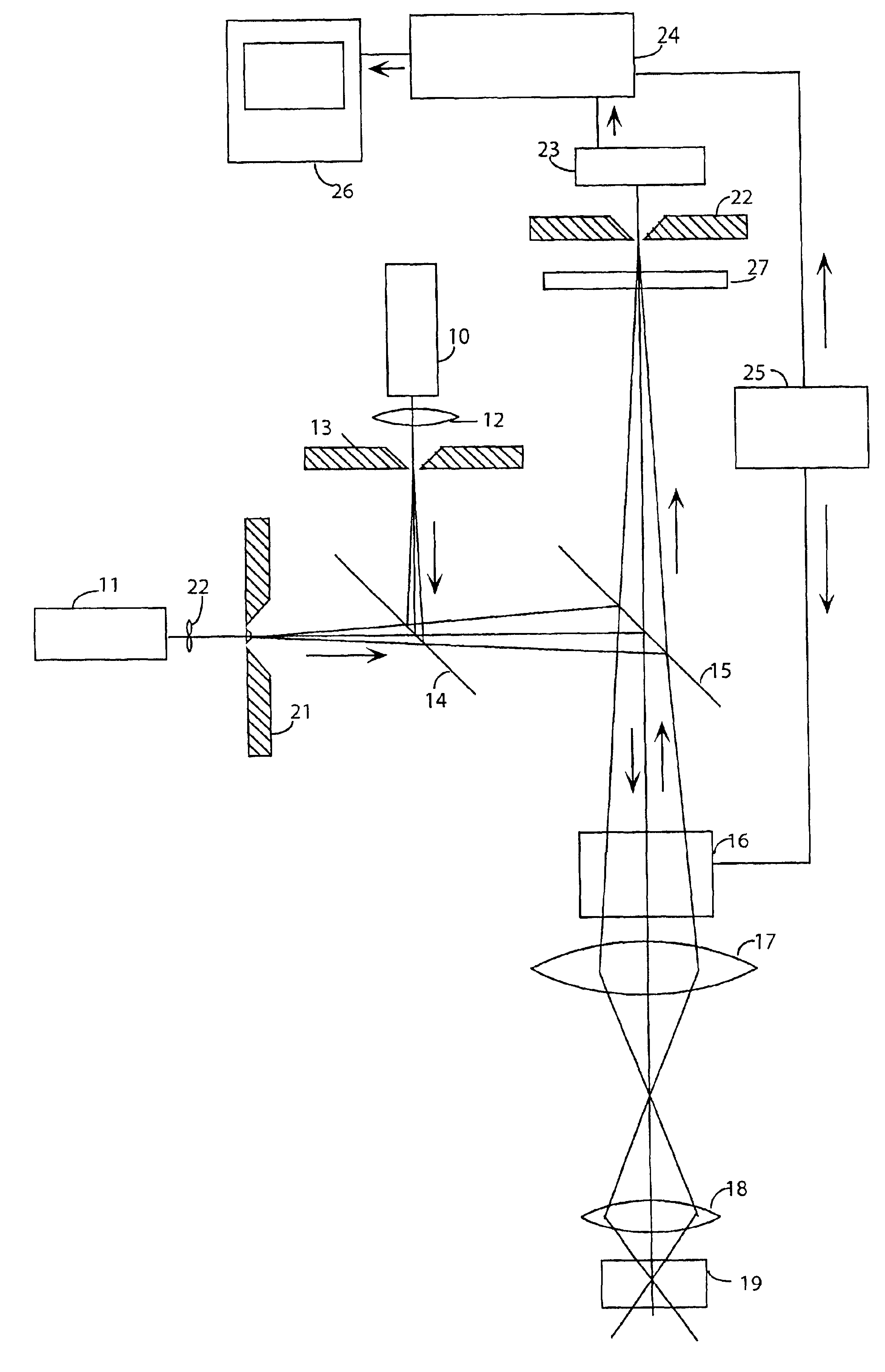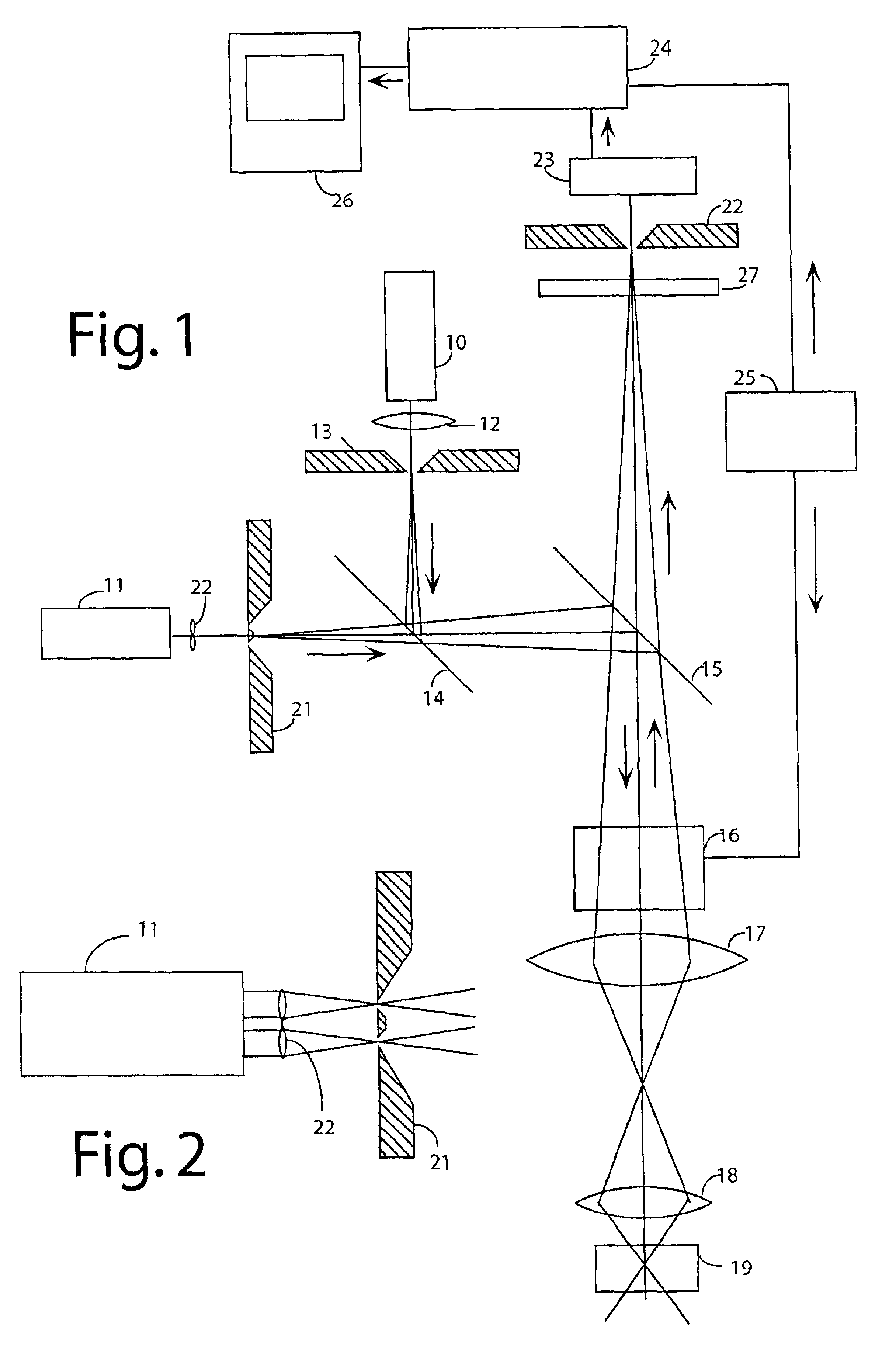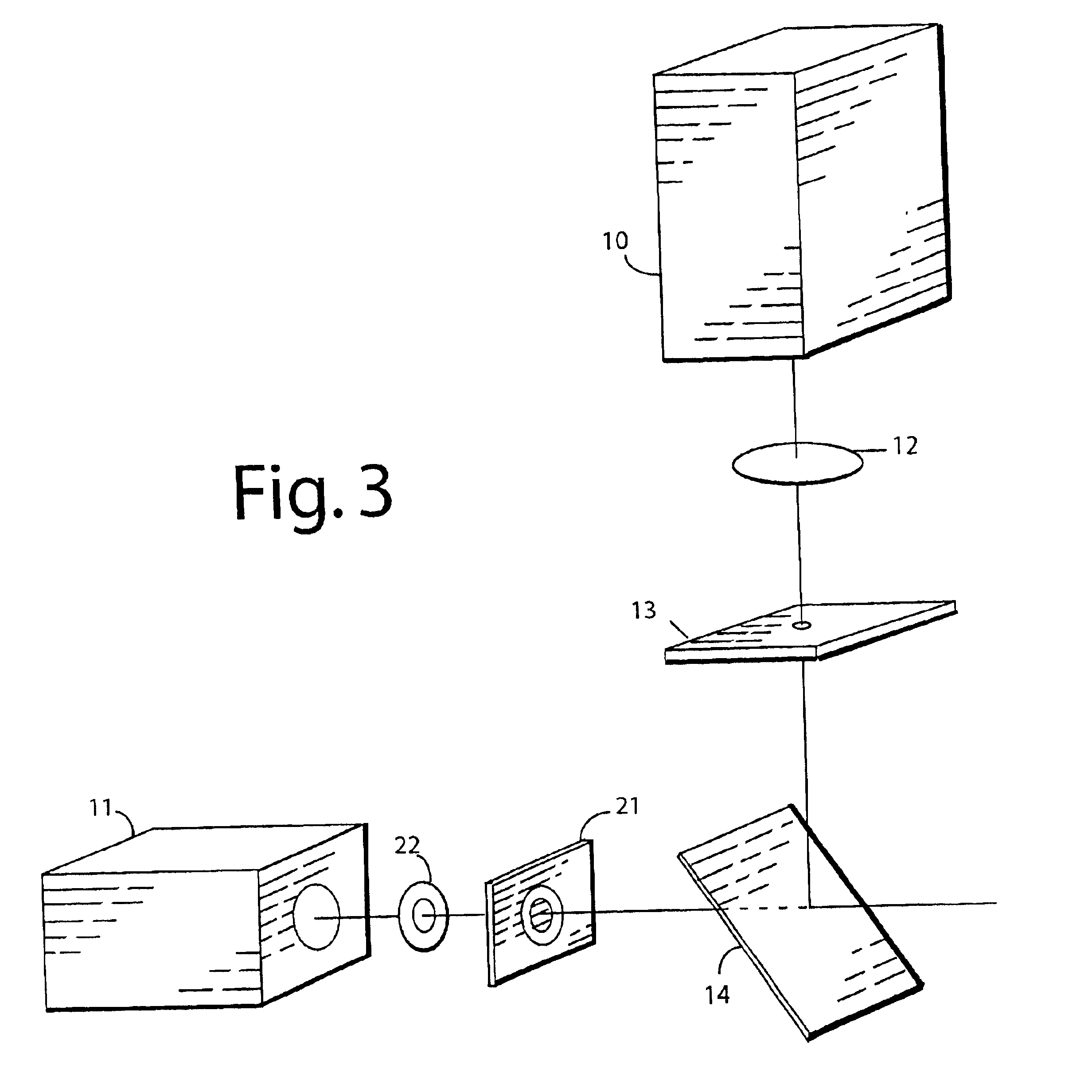Superresolution in microlithography and fluorescence microscopy
a microlithography and fluorescence microscopy technology, applied in fluorescence/phosphorescence, optical radiation measurement, nuclear engineering, etc., can solve the problems of reducing affecting the image contrast, and affecting the image quality of specimens, so as to minimize the damage of light induced to a specimen, improve the resolution of optical systems, and minimize the effect of light induced bleaching and photolysis
- Summary
- Abstract
- Description
- Claims
- Application Information
AI Technical Summary
Benefits of technology
Problems solved by technology
Method used
Image
Examples
Embodiment Construction
[0038]FIG. 1 shows an embodiment of the present invention employing continuous wave laser illumination. Light from excitation laser 10 is focused by lens 12 onto pinhole aperture 13, and after passing through aperture 13, reflection from dichroic mirror beam splitters 14 and 15 and scanning by beam scanning means 16 (which may be a pair of orthogonal galvanometer powered scanning mirrors) the laser light is imaged by eyepiece 17 and objective 18 on or within the specimen 19 stained with fluorescent molecules excitable by light emitted by laser 10, to form a region of excited fluorescent molecules at the image of pinhole aperture 13. Quenching laser 11, which emits light of a wavelength adapted to quench, by means of stimulated emission, the fluorescent excitation caused by laser 10, is focused by toroidal lens 22 onto annular aperture 21. Light passing through aperture 21 passes through dichroic beam splitter 14, then is reflected by dichroic beam splitter 15 to pass through the bea...
PUM
| Property | Measurement | Unit |
|---|---|---|
| frequency | aaaaa | aaaaa |
| frequency | aaaaa | aaaaa |
| wavelengths | aaaaa | aaaaa |
Abstract
Description
Claims
Application Information
 Login to View More
Login to View More - R&D
- Intellectual Property
- Life Sciences
- Materials
- Tech Scout
- Unparalleled Data Quality
- Higher Quality Content
- 60% Fewer Hallucinations
Browse by: Latest US Patents, China's latest patents, Technical Efficacy Thesaurus, Application Domain, Technology Topic, Popular Technical Reports.
© 2025 PatSnap. All rights reserved.Legal|Privacy policy|Modern Slavery Act Transparency Statement|Sitemap|About US| Contact US: help@patsnap.com



